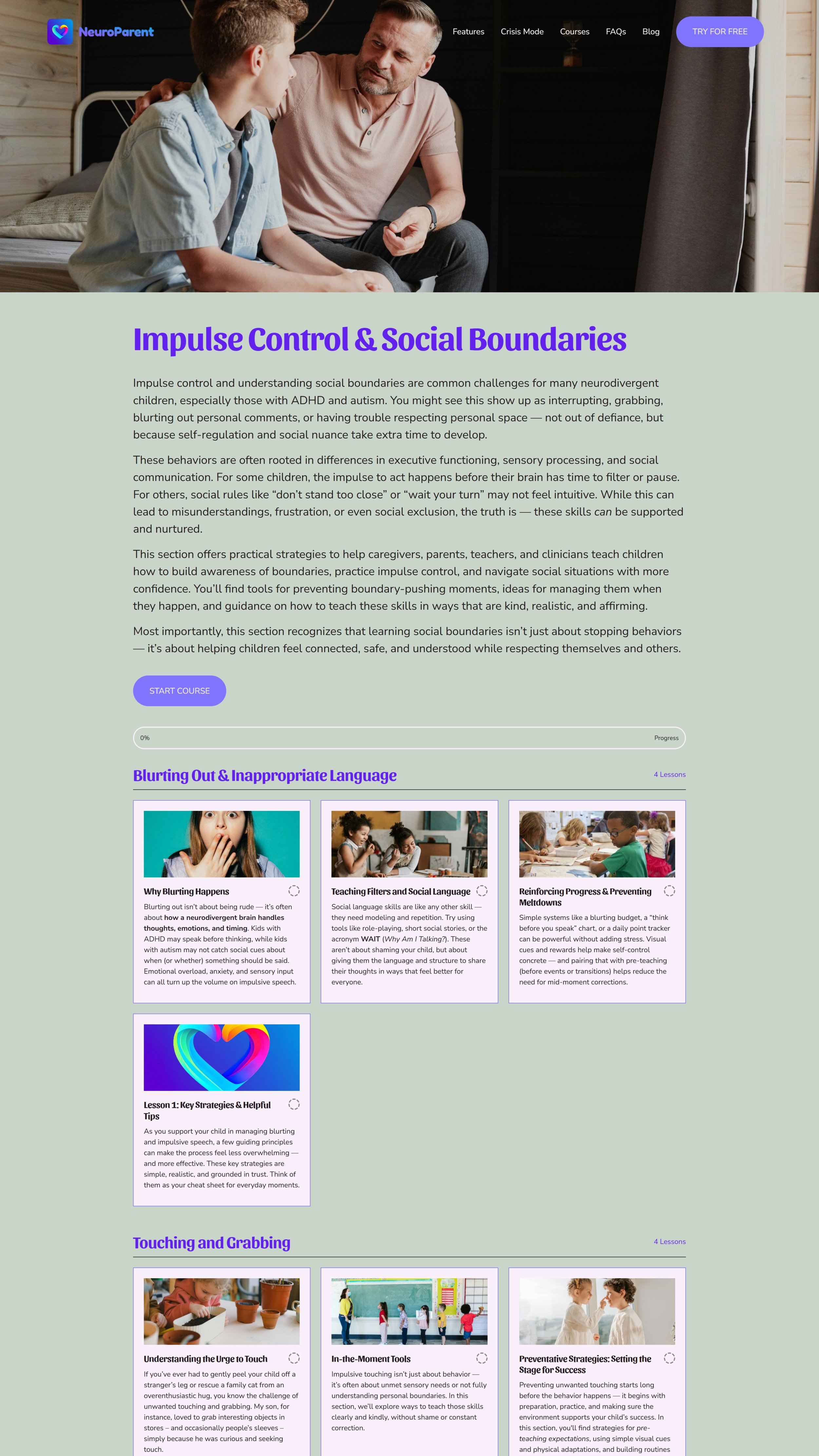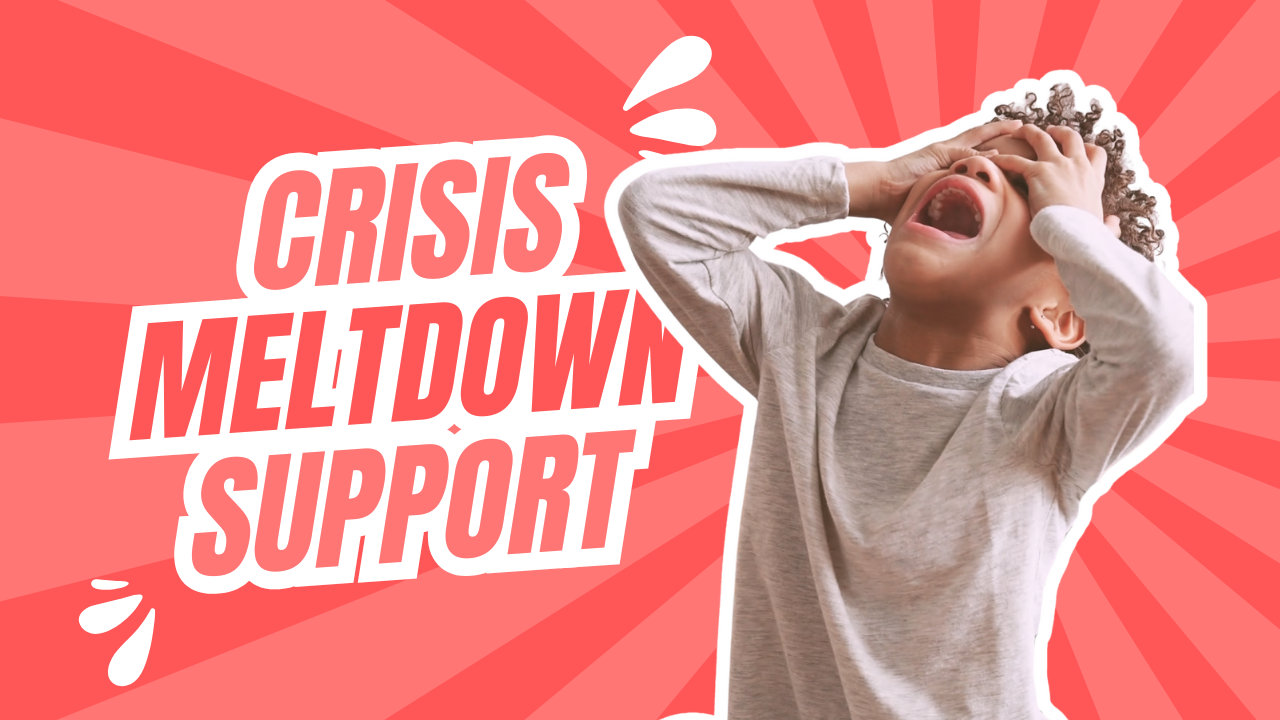
NeuroParent is a web app built to support parents when parenting feels hardest.
NeuroParent – Building Calm Into the Chaos
NeuroParent is a web-based support app I created to help parents navigate the daily challenges of raising neurodivergent children.
The idea emerged from a gap I found in the autism support space: while many tools focus on long-term tracking or professional-facing platforms, very few are designed to support parents in the moment, especially during meltdowns, shutdowns, or impulse-control episodes.
Finding the Gap
This project began with research. I’m a parent of a neurodivergent child, and I noticed how hard it was to find resources that responded to real-time needs.
Most apps were passive (logs, journals, info databases), but what I needed and what I heard other parents needed, was something that could support you when everything is falling apart.
That’s how Crisis Mode was born: a core feature built to coach parents step-by-step during a meltdown. Not theory—real, usable support.
Building with No Code Background
I don’t have a development background, so I leaned heavily on AI coding tools to build the product using React (Vite, TypeScript) and Supabase for authentication and storage. It meant learning fast, making lots of mistakes, and iterating often.
I handled all the UX, UI, and product design work myself, from wireframes to final polish. I later integrated Google Analytics for insight into how users were navigating the app and which features were actually helping.
Evolving Feature Set
The app started as just a meltdown-support tool, but it grew naturally based on user needs. Here’s a look at how the feature set evolved:
Crisis Mode – A real-time de-escalation guide that adapts to meltdown types like overstimulation, emotional dysregulation, and shutdowns.
Personalized Coping Plans – Coming soon: parents will be able to pre-build strategies and quick-access plans tailored to their child.
Mood Insights Dashboard – A weekly, monthly, and yearly overview of behavioral patterns, showing what days are most challenging and why.
Resource Courses – Quick strategies for redirecting inappropriate behaviors like grabbing, shouting, or boundary-crossing. All designed for learning and building a toolkit parents can use offline.
Behavior Snapshot – A color-coded mood tracker designed for overwhelmed parents to use quickly and intuitively.
Detailed Theme Analysis - The app’s logic looks at the notes a parent provides for each day’s mood and finds positive and negative correlations and displays the data for parents to view.
Marketing & Ads
UX Design Process
Everything about the app’s design came from one question: “Will this work when someone is overwhelmed?”
I designed interfaces to minimize decisions. Large buttons, simple instructions, minimal scrolling. All content is accessible with low cognitive load because in a real meltdown, even the parent is dysregulated.
I prototyped and tested flows, reworked them when they felt too wordy, and built in options like future offline access and audio prompts. I used different AIs such as Claude, ChatGPT and Julu to craft persona feedback.
I also made sure every feature could grow. For example, Crisis Mode isn’t static—it will eventually adapt to context like child age, environment, and crisis intensity as well as expand to a native app in the future.
Videos
Promotional videos and walkthroughs created using Premier Pro and Jitter.
Website




What I Learned
Parents don’t need more information—they need better timing, better design, and better support.
Building without a development background is possible—with patience, AI tools, and an iterative mindset.
UX is everything. An app that works on paper has to feel right under pressure.
Visit www.neuroparent.app to see the app live.














